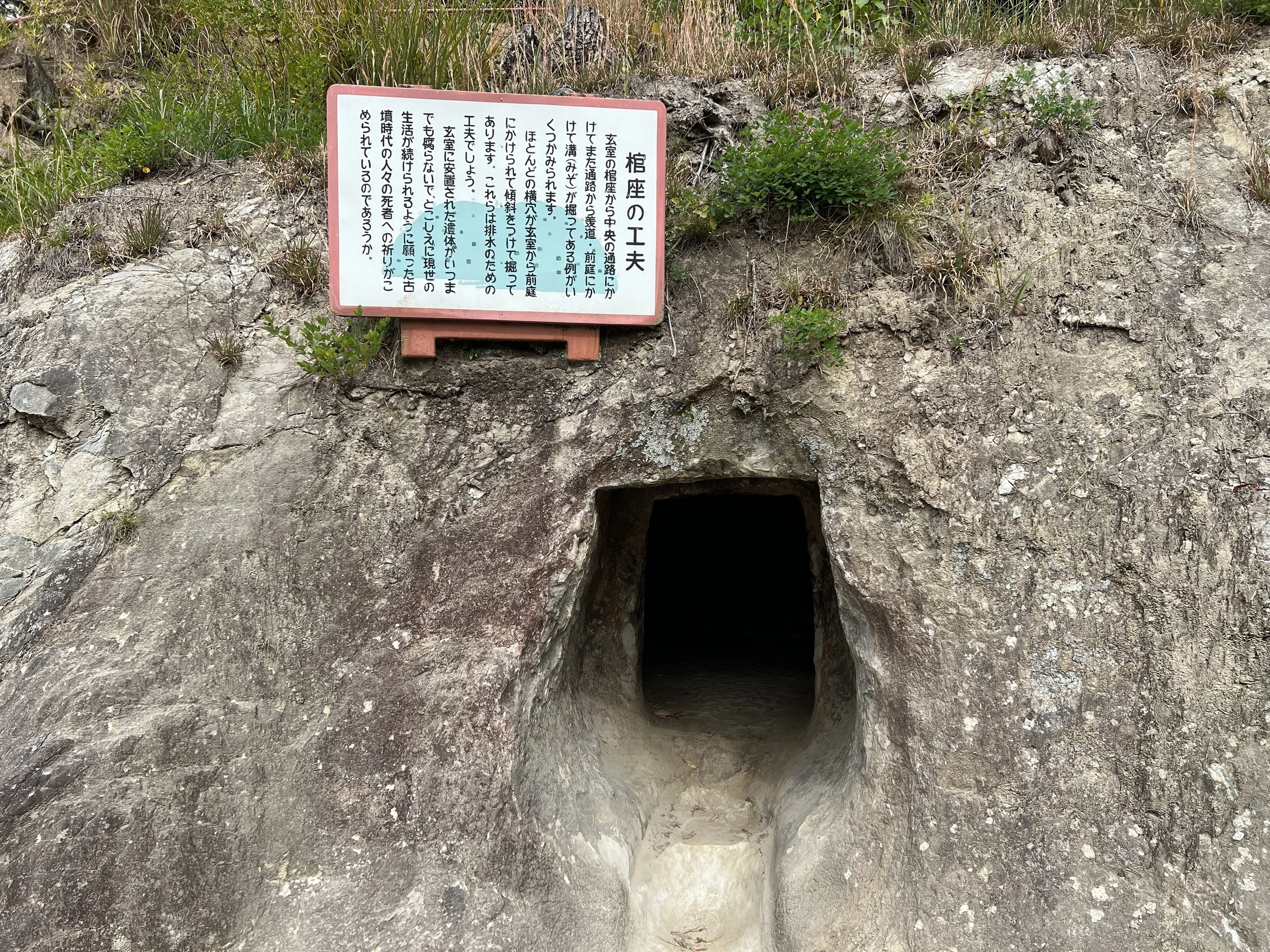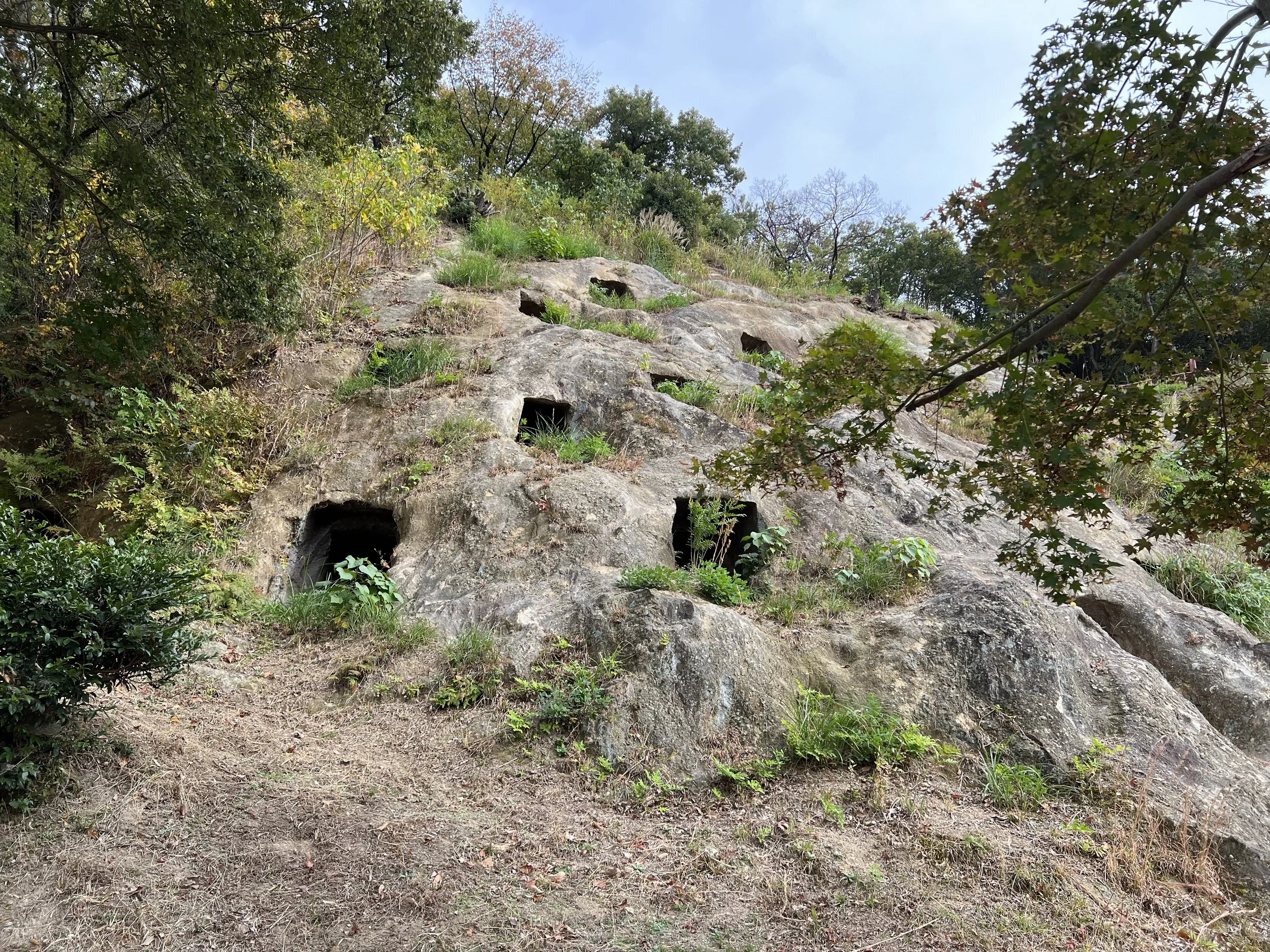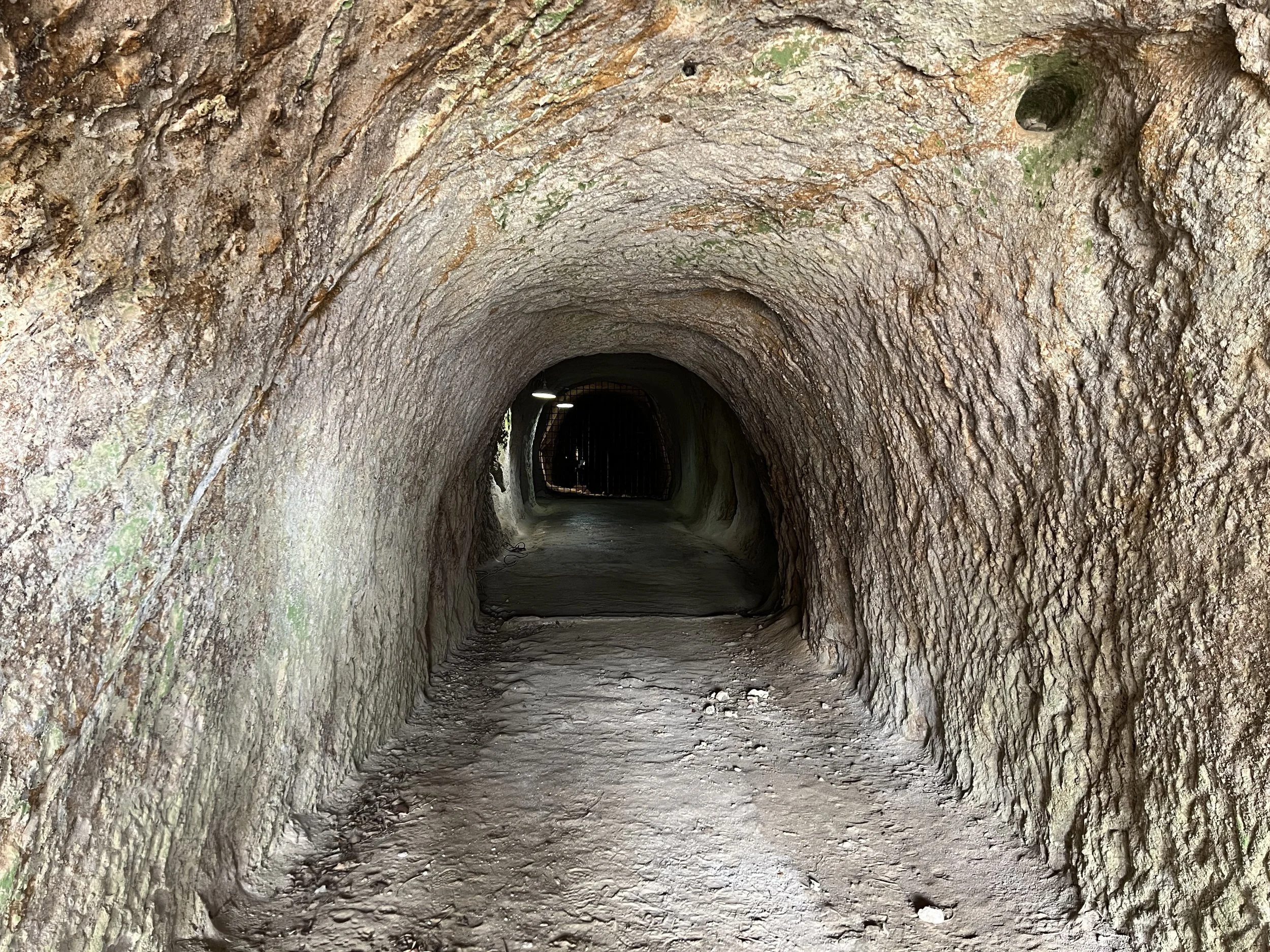Yoshimi Hyakuana - Saitama, Japan
This place isn’t a typical tourist spot—I’d never seen it mentioned on major Japan travel sites. I first learned about it from a manga a friend recommended, and curiosity led me to make a side trip while on my way to Nagano.
Yoshimi Hyakuana is just a short bus ride from Kumagaya Station. The stop is only a few minutes’ walk from the site, and you’ll pass the entrance to the Matsuyama Castle Ruins along the way. These tunnelled tombs were carved into the slopes of the Yoshimi Hills around 1,400 years ago, during Japan’s Kofun Period. Despite the name, which means “One Hundred Holes,” archaeologists have identified roughly 219 caves, many of which were later damaged during World War II when some were repurposed as underground factories.
When I visited, there were only two other tourists, giving the site a quiet, mysterious atmosphere. You can walk along paths that weave around the tombs and peek into the dark cave openings, though access inside is restricted to protect the site.
The cave entrances are surprisingly small—if visitors were allowed in, they’d need to crouch low to enter the narrow tunnels. Signs warn about snakes, which often shelter in the cool, shaded spaces.
Climbing to the top of the Yoshimi Hills rewards you with sweeping views of the surrounding countryside, the river below, and the nearby town—a striking contrast to the ancient burial caves. It truly feels like a hidden gem, far removed from Japan’s usual tourist trail.
History & Background
Yoshimi Hyakuana (吉見百穴), or “One Hundred Caves of Yoshimi,” is an ancient burial site dating back to the late Kofun Period (6th–7th century). The tombs were hand-carved into soft tuff rock, likely serving as collective graves for local clans. Archaeological excavations have revealed human remains, earthenware, and decorative beads, suggesting the area was once a thriving settlement.
During World War II, some of the tombs were modified and used as underground munitions factories, leaving behind traces of concrete reinforcements still visible today. Now designated as a Historic Site of Japan, Yoshimi Hyakuana stands as a fascinating blend of archaeology and wartime history—an eerie yet peaceful window into Japan’s ancient past.
Getting There
You can reach Yoshimi Hyakuana by taking the Tobu Tojo Line to Higashimatsuyama Station, then a short bus ride to the Hyakuana Iriguchi bus stop. Alternatively, take a train to JR Konosu Station and catch a longer bus to the same stop. If you’re driving, take the Kanetsu Expressway and exit at Higashimatsuyama.
Route Overview
Distance: 2.87 km (Honcho Nichome Bus Stop → Kyakuana Iriguchi Bus Stop)
Total elevation gain: 36 m
Duration: 35 min (with breaks 1 hr 23 min)
Difficulty: Easy
Cost Breakdown
Bus: Kumagaya Station → Honcho Nichome Bus Stop — ¥640
Entrance Fee: ¥300
Food: ¥850







